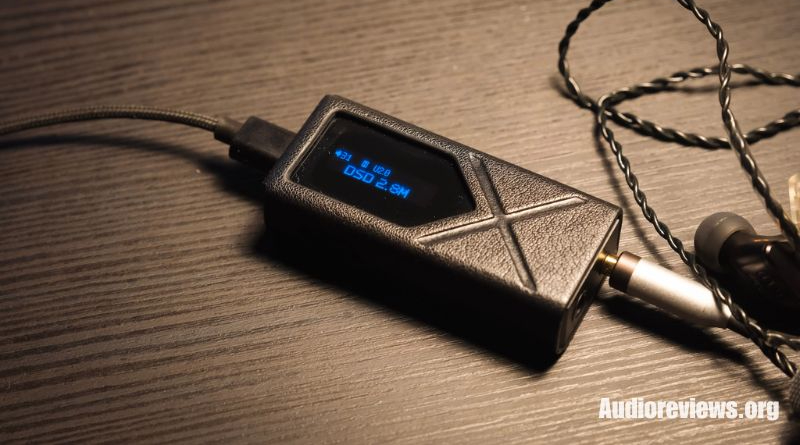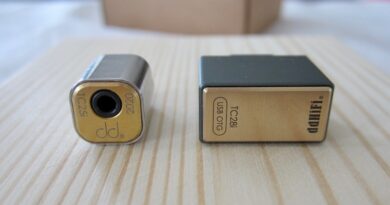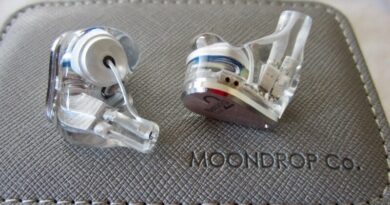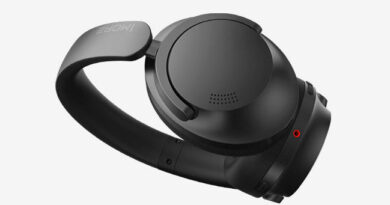FiiO KA17 Dongle Review – Sizzling Hot
The FiiO KA17 brings great sound and versatility to the table at a very competitive price point of $149, it can suck your smartphone dry but only if you leave desktop mode on.
PROS
- High power and low noise mean it will drive almost anything
- 10 PEQ bands can work wonders
- A fun, slightly warm sound
CONS
- Max power is only realized in desktop mode
- It gets hot with more challenging loads
- It can be a battery guzzler
In this Article
Introduction
The KA17 is FiiO’s top dog dongle at the moment. According to the Chinese personal audio giant’s webpage, it currently has no less than eight unpowered USB-only dongles. Add six Bluetooth and four large-format DAC/amps with on-board power and you’re starting to see that FiiO doesn’t mess about.
The FiiO KA17 caught my eye because it has at least two features I couldn’t find in other dongles. It uses dual ESS ES9069 DACs which is currently their top ultra-mobile chip and for amplification, we get a couple of low distortion THX AAA 78+ modules for true balanced drive.
Read on to find out whether all this big talk translates into something you’d like to keep in your pocket and maybe even use at the office in supercharged “desktop mode”!
Specifications
DAC chipset: 2x ESS ES9069 Amp stage: proprietary THX AAA 78+ modules USB receiver: XMOS XU316 Data input rates: PCM – up to 32bit 768kHz, DSD – up to DSD512 native, DOP256 Data output rates: SPDIF (via adaptor) – up to 24bit 96kHz. Max output power: SE – 110mW/ch@16ohms (320mW in desktop mode), 140mW/ch@32ohms (270mW in desktop mode), 20mW/ch@300ohms (30mW in desktop mode); BAL – 150mW/ch@16ohms (460mW in desktop mode), 300mW/ch@32ohms (650mW in desktop mode), 30mW/ch@300ohms (90mW in desktop mode*) Frequency Range: 20-50,000Hz@-0.5dB Output impedance: SE – <1ohm, BAL – <1.5Ohm SNR: ≥120dBA (worst case) Inputs: USB type-c for data and power, separate type-c port for power only Outputs: 3.5mm TRS, 4.4mm TRRRS EQ: 10 parametric EQ bands with peak, low-shelf, high-shelf, band-pass, low-pass, high-pass, and all-pass functions; amplitude adjustment 12dB to +12dB, Q-factor adjustment 0.1 to 10. Size: 64×27.7×12.7mm Weight: 33.5g Tested at: 149$ Purchase Link: FiiO Official Worldwide store, FiiO EU Store *max power spec contradicts FiiO’s claim of max output voltage of 4.5V which translates to 67.5mW@300ohm loads. |
Physical Things and Usability
| In The Box: FiiO KA17 dongle, USB OTG type-c to type-c cable, leatherette case, 2x USB dust plugs, USB type-a to type-c adaptor, warranty card and quick-start guide |
| Appearance, Haptic, Build Quality: the aluminum build feels nice and is adequately protected by the case, the buttons are easy to reach and operate by feeling alone |
| Ergonomics: while the size is larger than most USB dongles, the KA17 is still easily pockatable |
Build quality
In terms of build and feel it’s hard to fault the FiiO KA17. The chassis is milled aluminum and glass, therefore the small-ish box never feels cheap. To keep it looking new for longer FiiO throws in a snug-fitting pleather case which protects most surfaces while allowing access to both the buttons and screen.
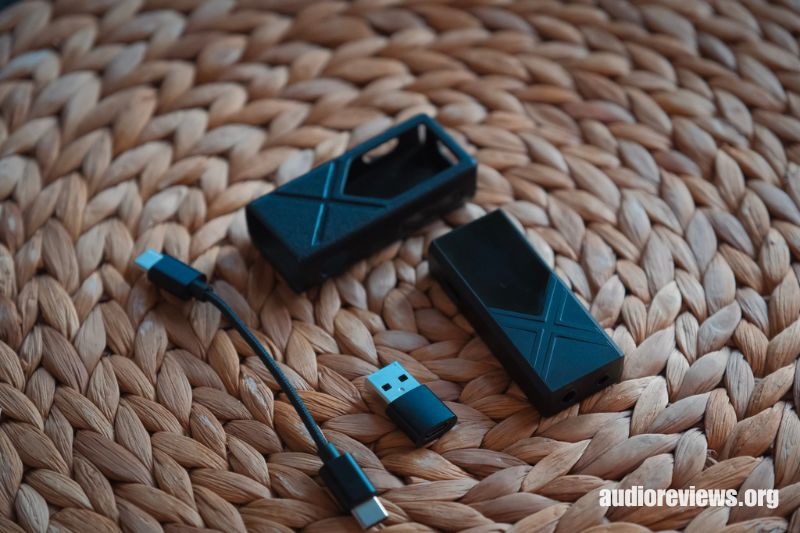
To operate the FiiO KA17 we get a short USB-C to USB-C cable which works okay for smartphone and laptop use. Apple users will need to source their own Lightning cable. My only gripe is that when mated to a smartphone, the cable creates a large loop which makes the whole setup a bit clunky. A shorter angled cable could remedy this.
Controls
To control the FiiO KA17 we need to use a three-button scheme. There are the usual +/- push buttons for volume and a single multi-function button for activating the screen and opening the menu. Within the menu we get the usual bevy of functions – DAC LP filter settings, gain adjustment, screen controls, USB audio class selector, EQ presets and SPDIF output toggle. To make use of the USB to SPDIF conversion, an appropriate TRS to RCA cable is needed.
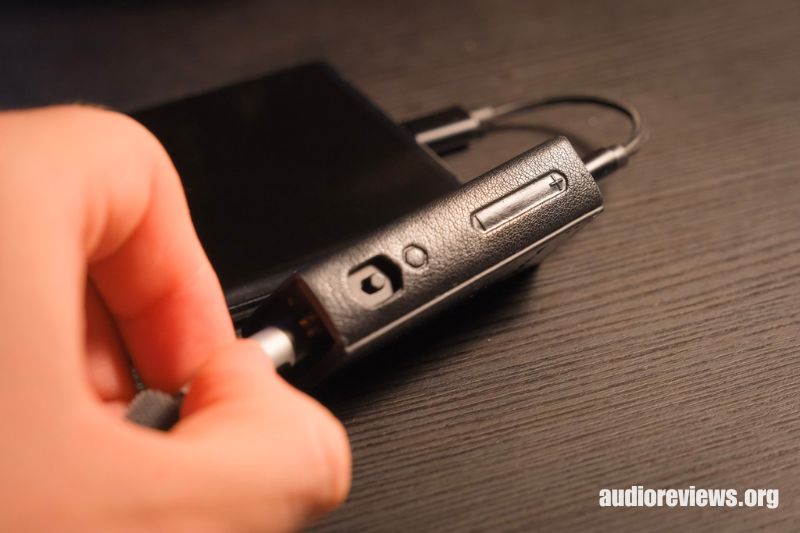
You read that right – the FiiO KA17 supports a full-featured 10-band parametric EQ. The tricky part is configuring it. One way is via the smartphone app (Andriod | Apple). The UI is serviceable but touch typing in 30 numbers for a 10-band setup can be a chore. Luckily there’s a way to use a browser-based UI to do it on the PC if the KA17 is connected. Strangely enough, it isn’t advertised anywhere in the manuals or on the company webpage.
Under the hood
The only way to send audio to the KA17 is via the USB-C port. And it has two of them! The side port can only be used to supply power to the dongle while the main port only handles data and power. Pretty nifty if you have a power bank and don’t want the KA17 to suck on the precious smartphone milliamp hours.
USB decoding is done by an XMOS XU316 chip, which also handles the EQ duties. The screen and general device control are likely handed over to some unspecified microprocessor. In the audio chain, we have a pair of ES9069 chips which are currently their highest-tier “portable” DACs. To my knowledge, FiiO is the first to implement them.
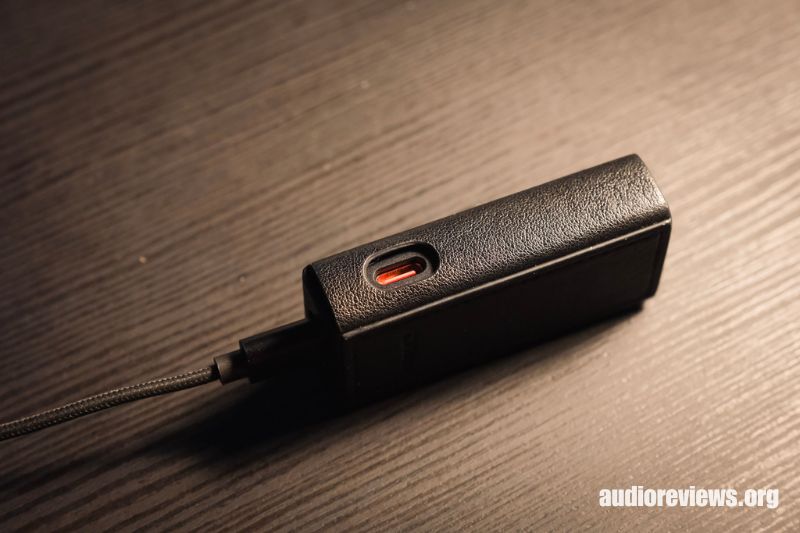
Amplification is done by THX AAA 78+ modules which FiiO has licenced. They usually incorporate two opamps which control each other with feedback and feed-forward error correction loops. FiiO’s product description alludes that in portable mode, only one set of output devices is used, enabling desktop modes switches on the full parallel array.
In high-gain and desktop mode, the FiiO KA17 can muster up to 650mW per channel in a balanced 32-ohm load which is quite high for a device of this caliber. Switching to portable mode cuts it to 300mW in 32-ohms which is still respectable. 16-ohm and 300-ohm power is respectively current and voltage limited but should be enough for most headphones.
Sound quality and signature
Test setup: On the go, I used my Samsung Galaxy Note 10+ as the source and Simgot EA1000, Thieaudio Monarch MK3, and Xuanwu Tangzu Gate IEMs. Sennheiser HD6XX, Moondrop Para, and ZMF Auteur Classic were used for high and low-impedance torture testing.
First, some practicalities. Be sure to update the firmware on the FiiO KA17 as the initial version was rather unstable. The device tends to heat up with full-size headphones which has led to some users experiencing thermal shutdowns. I couldn’t replicate the problem even in sunny +25C ambient temps but in desktop mode, the KA17 did get unusually hot.
In terms of power consumption, the KA17 is rather interesting. At low gain, portable mode, and no EQ the power draw would roughly be in line with my other dongles. Engage all the bells and whistles and the power draw will skyrocket to 200mA over what I got from Colorfly CDA-M2. This is where the auxiliary USB-C port can come in handy – hook a power bank to it and you’re sparing the battery of the host.
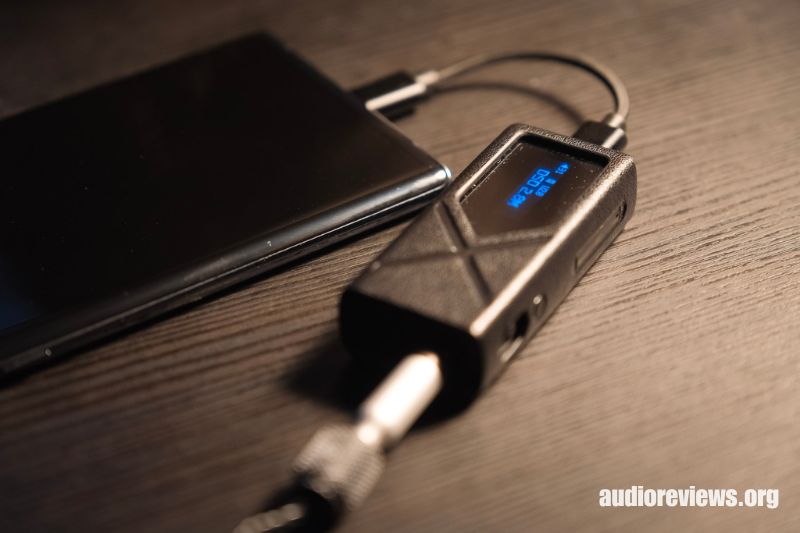
The overall sound signature of the FiiO KA17 is in line with what I’ve grown to call the FiiO house sound. It’s a mix of modern ESS vividness and some warmth that’s a hallmark of FiiO electronics. I found it works well with just about all of my headphones and IEMs. And even with the Simgot EA1000, the noise floor was imperceptible.
Compared to CS43198, CS43131, and ES9219-based dongles I’ve tried, the ES9069 displays better technicalities. The sound source delineation was quite high for a portable and imaging was believable yet ultimately very recording-dependent. Higher-grade ESS chip-based desktop DACs which employ the ES9039PRO and even ES9039Q2M provide an overall improvement, no free lunch here.
Select comparisons
Colorfly CDA-M2
The CDA-M2 is a bit more portable and performs similarly in terms of technicalities. With that said, I very much prefer the timbral qualities of the FiiO KA17 and its EQ capabilities make it a better value proposal.
The KA17 surpasses the CDA-M2 in all aspects. Go for the Colorfly dongle only if the price difference matters and your IEMs are dark or warmer sounding.
Ifi GO Bar Kensei
I won’t surprise anyone by saying that the Kensei is untouchable if build quality and looks are what you’re after. In terms of raw sound quality, it surpasses the KA17 but the FiiO dongle hits back with lower noise floor and EQ which can be a game-changer in the right hands.
Who am I kidding – if your sights are set on the GO Bar Kensei, the FiiO KA17 won’t change your mind or heart. Unless you’re a true EQ freak looking to save some dosh.
Pairing notes
The FiiO KA17 is neutral enough to play nice tunes with just about anything you hook it up to. This would mean that using it to compensate for the colorations of certain IEMs or headphones wouldn’t work but that’s where the PEQ comes into play. Use one of the numerous measurement repositories to find a good measurement and try to dial in a compensation profile. It can breathe new life into most systems.
Concluding remarks
I genuinely think that FiiO has made a well-thought-out dongle with the KA17. Sure, it’s a bit big and sometimes gets hot but it nails all of the dongle fundamentals. To get a meaningful upgrade you’d have to go for the larger Bluetooth-capable units or more expensive specialist dongles. But even if you do upgrade, the real question is whether it will matter when you’re on the street or in the din of the commute.
My verdict – 4.5/5
Disclaimer
Thanks to FiiO for supplying the review sample. As always, they had no say in the review process and didn’t see the review before posting.



